Learning from the unanswered questions: Dissecting FORECAST & ISCHEMIA with Drs. Derek Connolly and Campbell Rogers
Learning is a treasure that will follow its owner everywhere.
– Chinese Proverb
It is a distinct pleasure and opportunity to learn from colleagues across the globe who are participating in current clinical research that is changing the way we practice medicine. One such opportunity came to me via a recent discussion with Dr. Derek Connolly, PhD, a Consultant Interventional Cardiologist and Honorary Senior Clinical Lecturer at Birmingham City Hospital, Birmingham UK.
Derek and I spoke about the FORECAST and ISCHEMIA trials. Derek’s experience as an investigator and busy practicing clinician enables him to offer insightful perspective on and learnings from these trials. During our conversation, which you can view here, we focused on both the lessons learned as well as the lessons not learned from these important trials. A few highlights of the discussion included:
The FORECAST Trial
- Lesson learned: The “usual care” arm of FORECAST is actually quite unusual from what is seen in other geographies, given the common use of CTA as a frontline test in many of the UK’s NHS facilities
- Lesson learned: The CT+HeartFlow pathway clinical benefits included improved cardiovascular care efficiency (such as a 22% reduction in negative ICAs and 40% reduction in layered non-invasive testing) with no change in safety or costs
- Lesson NOT learned: FORECAST does not tell us whether a CT+HeartFlow pathway is less resource intensive when compared to usual care found in most US hospitals (stress testing)
The ISCHEMIA Trial
- Lesson learned: ISCHEMIA applicability may be low as only a small percentage of stable patients seen in clinic today would have qualified to be in the ISCHEMIA trial
- Lesson learned: CTA effectively differentiated patient risk whereas ischemia severity from stress testing failed to do the same
- Lesson NOT learned: Since no physiologic tools such as FFR or FFRCT were available in ISCHEMIA, there was no effort made to understand how they aid in stratifying patient risk and determining appropriate treatment plans
The highlights from our conversation can be seen here, and I hope you will take a moment to listen in and learn from the discussion, as I did.
We have significant work ahead as we push toward a better future for both our patients and the practice of cardiology. Learning from one another will be a critical part of this process, and it becomes even more valuable as we apply those learnings to the patients we see each and every day.
— A perspective from HeartFlow Chief Medical Officer, Campbell Rogers, MD
Bio | LinkedIn





